Why the Microplane is the Best Tool for Your Kitchen
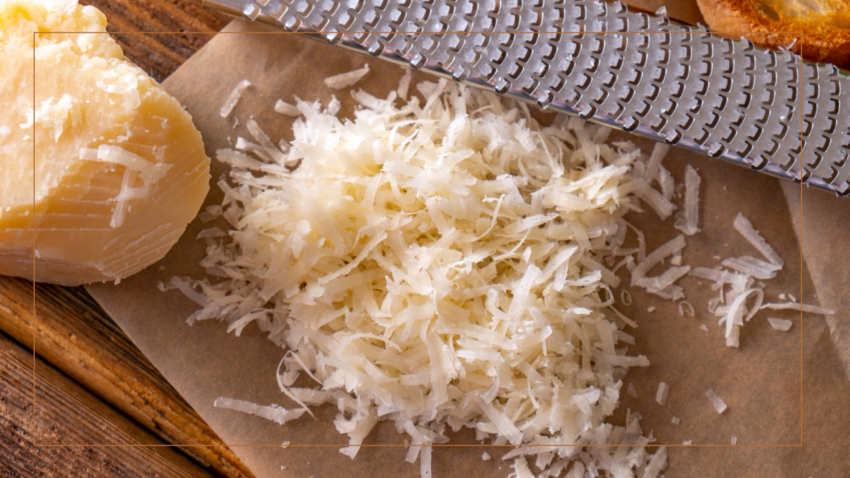
When it comes to culinary tools, there’s one tool that stands out in my kitchen—the Microplane. Whether you’re a home cook or a professional chef, the Microplane grater is a must. Known for its ultra-sharp blades and ease of use, this versatile tool can make tedious tasks quick and painless – think ginger, garlic, and citrus zest.
Table of contents
The Importance of Having the Right Tool ⚙️
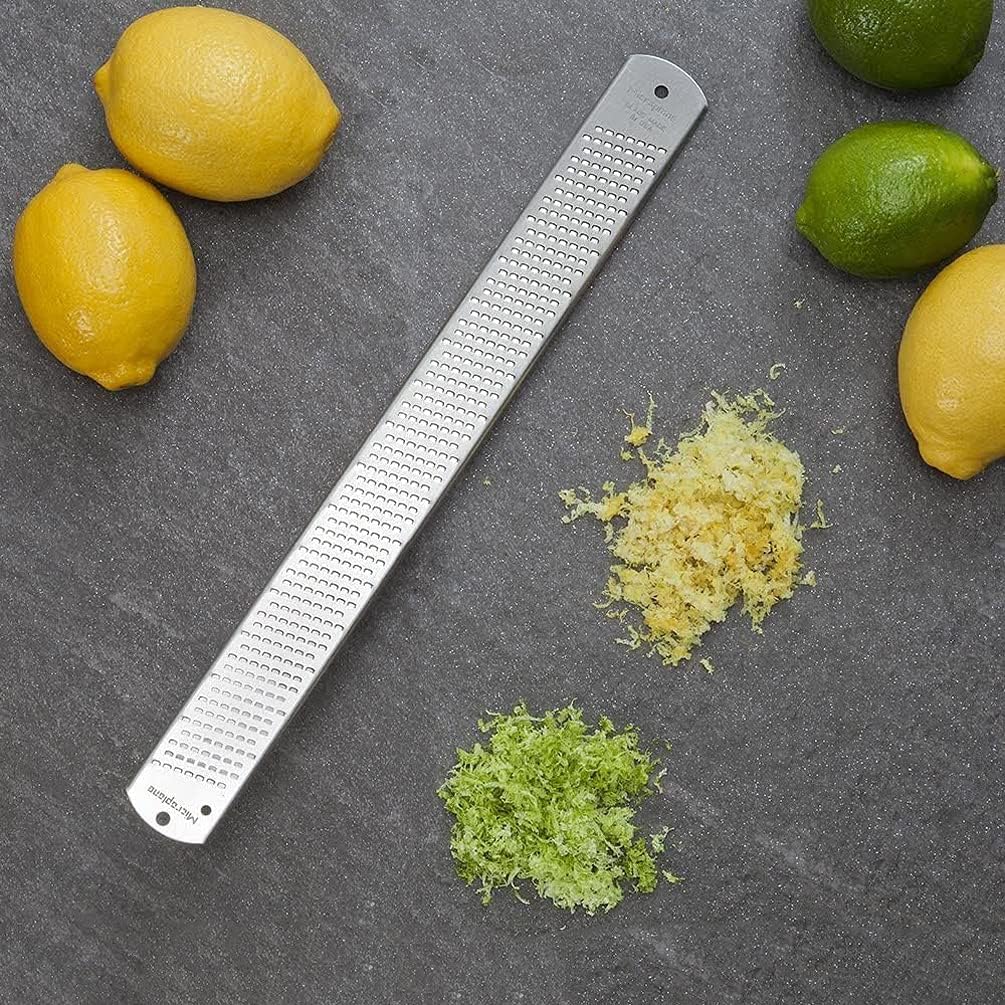
When cooking, having the right tool for the job makes everything smoother. It can make preparation faster, easier, and more enjoyable. That’s why, if you’re building your kitchen kit, a Microplane should be at the top of your list.
The Versatility of the Microplane 🍋 🧀 🍝
One of the outstanding features of the Microplane is its versatility. From grating fresh ginger to zesting citrus fruits, this tool handles it all with precision and ease.
Fresh Ginger
Grating fresh ginger can be a daunting task with a traditional grater due to its fibrous roots. IYKYK. The Microplane’s sharp teeth efficiently grate ginger fibers, providing a perfect combination of pulp and juicy shavings that blend seamlessly into your dishes. Unlike ceramic ginger graters that require more maintenance, the Microplane’s stainless steel design ensures durability and easy cleaning.
Hard Cheese
Whether Parmesan or Pecorino Romano, it creates a fluffy pile of cheese that’s easy to measure and incorporate into your favorite pasta, salads, and more. Its fine grater surface ensures consistent results, adding a professional touch to your meals.
Garlic
Forget about cumbersome garlic presses—the Microplane grates garlic without juicing the garlic. It produces a fine paste that’s perfect for sauces and dressings, making meal prep quicker and more efficient.
Citrus Zest
Transform your desserts and cocktails with vibrant citrus flavors. The Microplane expertly removes the fragrant outer layer of lemons and oranges without the bitter pith. Its rasp-style graters and paddle graters with removable blades offer tailored options for different grating needs.
Other Uses
You can even use it to finely grate garlic or shallots, transforming them into a paste that blends into dressings, marinades, or sauces without the need for extensive chopping. It’s also a handy tool for grating spices like nutmeg or cinnamon. Some chefs even use a Microplane to create delicate chocolate shavings for garnishing desserts or coffee beverages.
I’ve even used it to grate carrots in a pinch!
Ease of Use and Maintenance 🧽
Praised by America’s Test Kitchen for its ease of cleaning and long-lasting durability, the Microplane is a low-maintenance tool. Its snap-on cover ensures safe storage and prolongs the blade’s sharpness.
Step-by-Step Instructions for Using a Microplane
- Start with a clean tool: Rinse the Microplane under hot water to dislodge any debris, and dry it completely.
- Choose the item you wish to grate: Citrus fruits, hard cheeses, fresh ginger, garlic, or whole spices like nutmeg.
- Hold the Microplane handle securely with one hand, ensuring the blade is angled away from your body. Position a bowl or cutting board beneath the grater to collect the shavings.
- Grating Technique: Place the ingredient at the top of the Microplane. Move it back and forth across the blade, applying light, even pressure. Rotate the ingredient if needed to ensure even grating, especially for round ingredients like citrus.
- Collection: Allow the fine shavings or zest to fall directly onto a bowl or a plate for easy gathering. Tap the Microplane lightly against the edge of the bowl to release any stubborn bits.
- Post-Grating Safety: Upon finishing, ensure the Microplane is secure on a stable surface before releasing your grip. Refrain from using fingers to remove remaining pieces from the sharp blades.
- Cleaning the Microplane: Immediately rinse the Microplane under warm water to remove residue. Use a soft-bristled brush to gently scrub along the blade if necessary. Alternatively, place the Microplane on the top rack of the dishwasher for a thorough clean. Dry the Microplane completely before storing it, as moisture can diminish the sharpness of the blades and lead to oxidation.
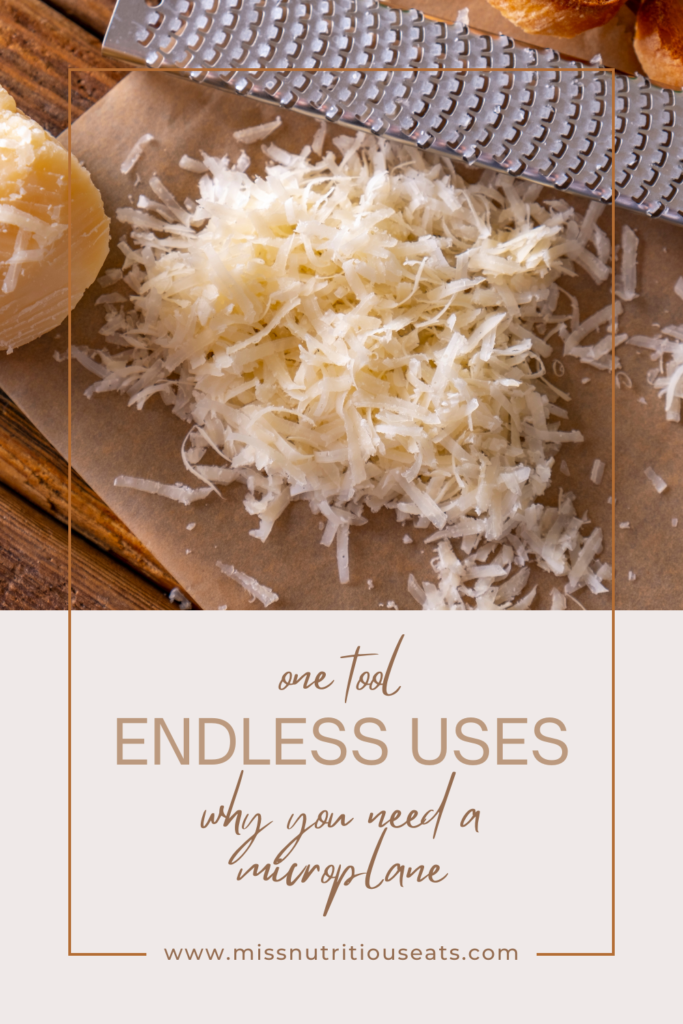
FAQ 📓 ✏️ 🔍
Recommended Brands
When it comes to choosing a high-quality Microplane, a few brands stand out. The original Microplane brand itself is probably the industry leader, thanks to it’s precision-engineered blades and ergonomic designs. Other brands include OXO, known for its user-friendly designs and comfortable grips, and KitchenAid, which combines durability with versatility.
How Much Does a Microplane Cost? 💵
The cost of a Microplane can vary depending on several factors, including the brand, model, and specific features. On average, a standard Microplane grater can range from $8 and up. I’m usually of the mind that you get what you pay for. But I have an $8 microplane from culinary school that is still doing a great job for me. So it’s really a low investment tool that every cook should have.
Is a Microplane Difficult to Clean? Can It Go in the Dishwasher?
Cleaning a Microplane grater can be relatively straightforward, though its fine, sharp blades require some care. Most Microplane graters are designed to be easy to clean by simply rinsing them under warm water immediately after use to prevent food particles from drying and sticking. Many models are dishwasher safe; however, it is often recommended to place them on the top rack to avoid potential damage and preserve the sharpness of the blades. For the best results, hand-washing your Microplane with a gentle brush can help maintain its quality and performance over time. Always refer to the manufacturer’s care instructions for specific guidance on cleaning and maintenance.
Does It Take Up a Lot of Room?
Microplane graters are generally designed to be slim and compact, making them easy to handle and store in any kitchen setting. This is why I’m such a fan! Their streamlined shape ensures they do not occupy much space in a kitchen drawer or cabinet. Some models even come with a protective cover or a hole for hanging, allowing them to be stored on a utensil rack or wall-mounted for added convenience. I usually keep mine in a a drawer or standing upright with other tools in a jar for easy access during cooking.
Are There Other Kitchen Tools That Can Be Used to Grate Ginger?
Yes, there are several kitchen tools that can effectively grate ginger if a Microplane is not available.
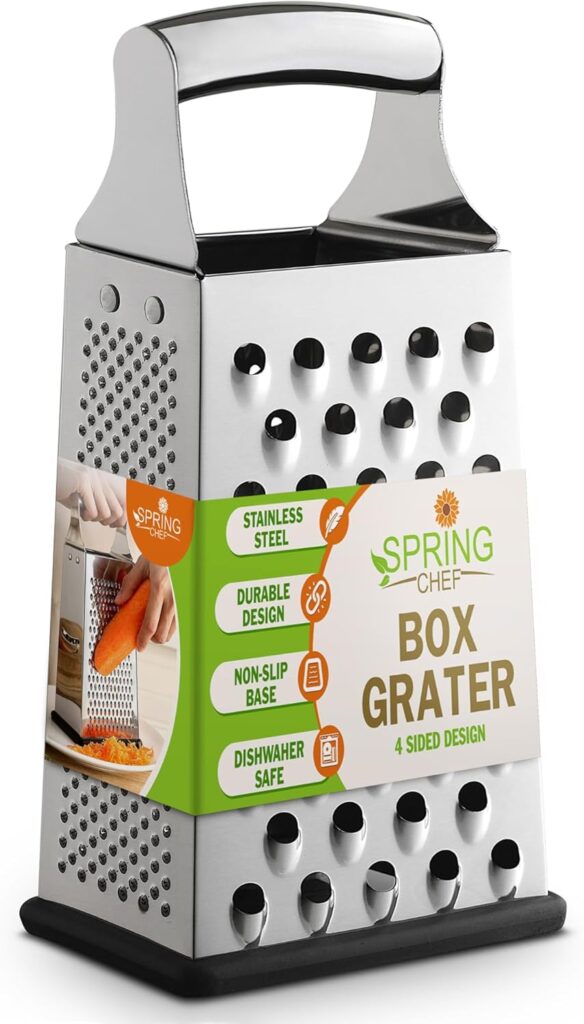
One such tool is a traditional box grater, which often includes a fine grating side suitable for breaking down ginger’s fibrous texture.
Alternatively, a ceramic ginger grater is specifically designed for this purpose, featuring small, sharp teeth that efficiently shred ginger into a smooth paste while capturing the juice. These are usually round with an outer collection trough to hold juice.
A small paring knife can also be used carefully to mince ginger into fine pieces if no grating tool is accessible.
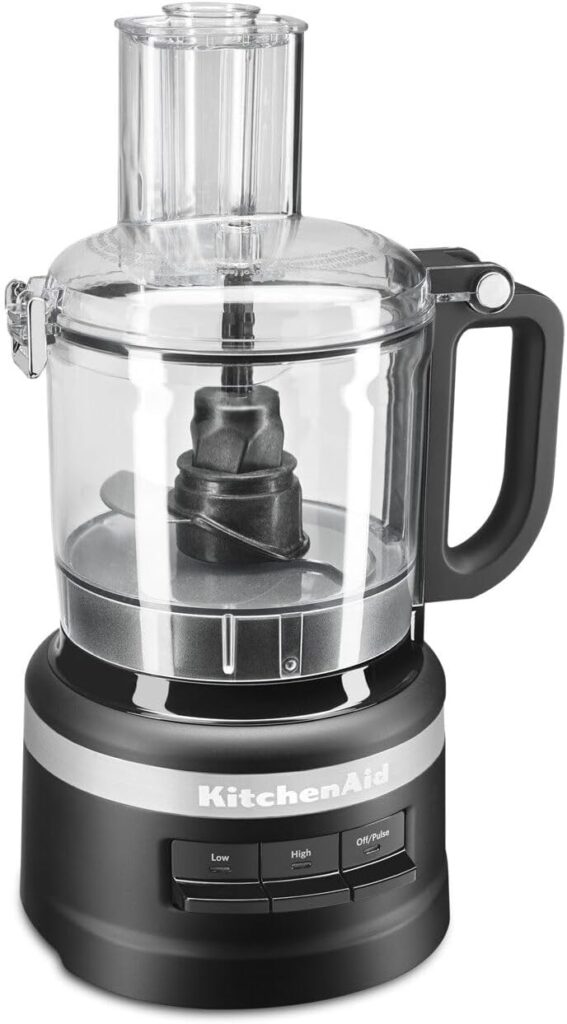
For those with a food processor, using a shredding attachment can quickly and easily process ginger in larger batches. I’ve had my Kitchen Aide for some time and use it weekly for items like zucchini or making energy bites.
Each of these options can be convenient depending on the specific preparation needs and volume of ginger required.

